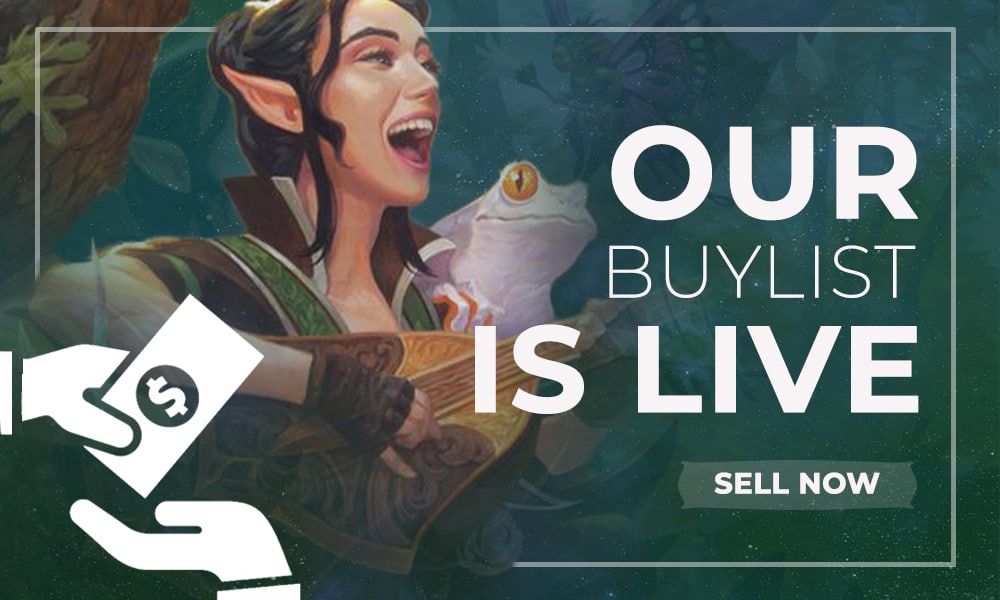All I do is Win Innistrad: Midnight Hunt Limited
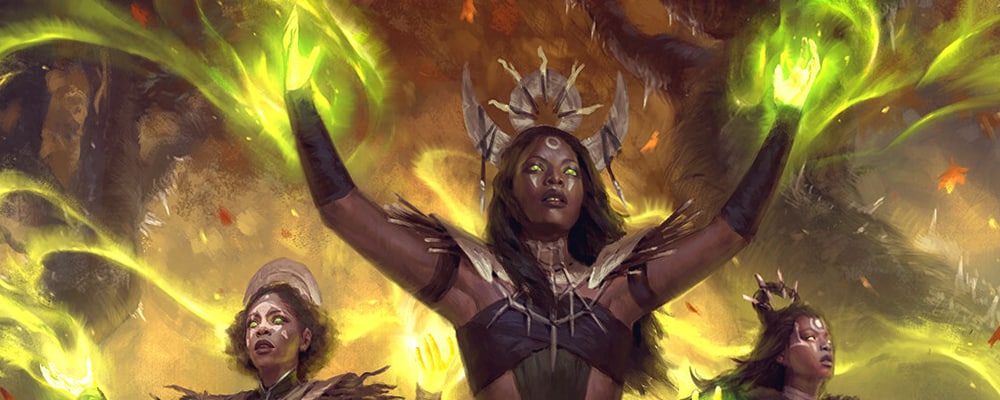
Innistrad: Midnight Hunt has arrived, and I’ve spent quite a bit of time drafting. If you haven’t been following my Twitter feed, I’ve been actively tweeting updated results. I’ve been doing well, and I want to share what I’ve learned thus far. At the time of this article, I’m tied with Kyle “TheHam” Rose for most trophies on MTGO and a 52-8 record.
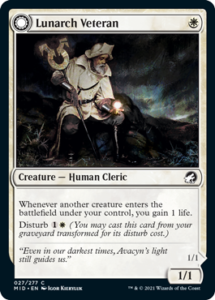
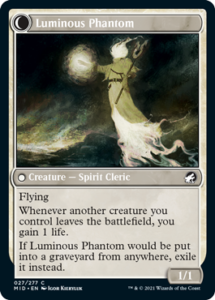


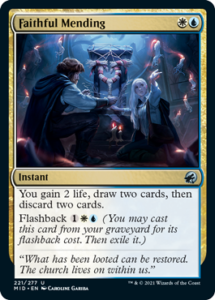

Midnight Hunt bears some resemblance to the original Innistrad, much more so than Shadows over Innistrad did a few years back. The format is fast paced with lots of decisions. People generally never run out of things to do because of a combination of activated abilities, Flashback, Disturb, and traditional card advantage. When I say fast paced, I mean getting on board early is crucial and falling too far behind is a death sentence. The games can bog down and slow to a crawl once both players start well, so you want to both punish stumbles and grind in a long game. It’s a tricky combination.
Generally in a format like this, removal is ancillary but it’s what you should focus on early outside of obvious bombs like a traditional draft format. There’s a wealth of creatures that if left unchecked can finish games, and there are tons of ways to generate value, so you need to be ready to answer problematic creatures that take over games. You can have too much removal, so be wary of that, as there are so many cards that create value, and decks full of removal start with a lower life total because of the many free decay tokens.


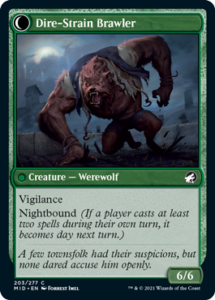

The werewolves are incredible-rate creatures for Limited, but the archetype R/G Werewolves is weak overall. The common cycle of three-drop werewolves are huge late-pick values that I think people underestimate because they’re trying to cobble together loose synergies like, B/W Sacrifice, Vampires, and Coven. The one big difference in this format from previous werewolf formats is that they can’t interrupt your pace of the Night and Day cycle. If you don’t cast a spell, it flips. Strategically, this is a huge benefit to werewolves, and people haven’t quite caught up to speed.


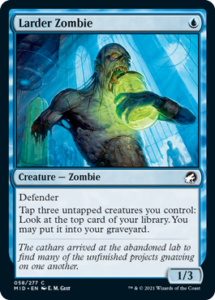

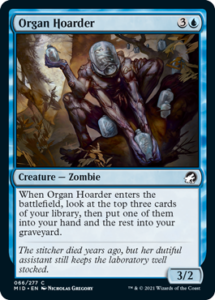


As far as synergistic decks are concerned, I don’t like to focus on them generally, but if I do, I move in early and try to stake my claim. If I miss the boat, I move on. You can’t pass premium cards in Vampires, Werewolves, Spirits and expect to get enough for the decks to come together, as the archetypes can’t support multiple players well. The synergies I focus on most are some form of self-mill for value and Zombies because the cards individually are strong.
In my experience, it’s generally not worth trying to stitch a bunch of bad cards together for synergy. Just play the good-rate creatures and removal, and use some form of value engine for the long game. The value can come from Flashback with self-mill, activated abilities, or cards like Organ Hoarder, which many say is the best common, while I’m personally not so sure. I’m at the point where I take Olivia’s Midnight Ambush pick-one-pack-one over it, but it happens so infrequently, and the value is so miniscule that I don’t mind which one you take. It’s more important to have a plan on how to continue after you make the pick. I just prefer black to blue at the moment.
Why do I Have Olivia’s Midnight Ambush so high? It’s essentially a better Doom Blade in the decks I like to draft, where I pick up late three-mana werewolves in whatever color I start with for the powerful uncommons and rares. I try to stay open but prefer black or blue in my decks. I rarely end up with UB because of color balancing and how strongly the average drafter perceives both colors. On MTG Arena, they might not have caught up to speed, as the pool of players is larger and less experienced, so go at it.
Example Trophy decks:




I’ve often heard red and green are the worst colors, and green is easily my third favorite color. I think the most underrated card in the set right now is Bird Admirer. Everyone was so busy looking at Essence Farmer that they forgot to check out this other green three-drop. Bird Admirer allows you to dictate the pace of the game. It blocks nearly everything and can punish an opponent when they stumble. Starting the Night or Day cycle is huge with Olivia’s Midnight Ambush, which is another huge plus.


Since my game plan is as described, I find white to be the weakest color, and I don’t think it’s close. There are no werewolves to punish, only mediocre three-mana 3/2s that don’t scale if the opponent misses a beat. The removal is bad, the creatures are bad, and the synergies aren’t worth the effort most of the time. While red, most commonly viewed as the weakest color, is shallow, its best cards are still better than white’s best cards individually, so when it’s open it’s a solid supporting color. I’ve had most success with heavy-blue-splash-red removal, but also boros aggro, as Sunrise Cavalier’s tend to go late these days because of players’ preference for blue or black to start.
It’s important to note that graveyard hate attached to cards is a huge upside and almost always pays off in long games to be worth a full card. You’re often able to set up sequences of removal on a disturbed creature and untap with a card like a Diregraf Horde or Soul-Guide Gryff.
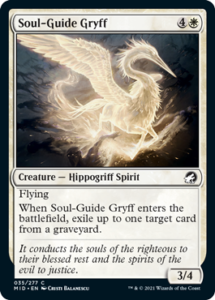




While I’ve drafted white successfully, it’s because the color is open, and I usually end up heavy white and aggressive. White grindy decks are often too weak to compete, as they lack the power level to play long games. I’ve had some success with WB Sacrifice, but only rarely does it come together, and it takes quite a few higher rarity cards to come together.
MY TOP 5 COMMONS FOR EVERY COLOR
WHITE
1)Search Party Captain
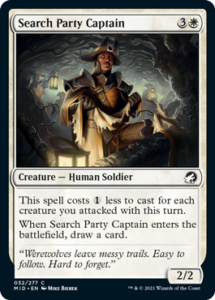

2)Candlegrove Witch


3)Gavony Silvermith
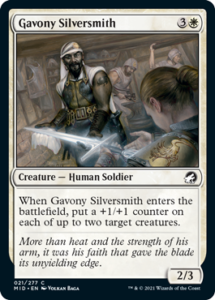

4)Lunarch Veteran // Luminous Phantom






5)Candletrap
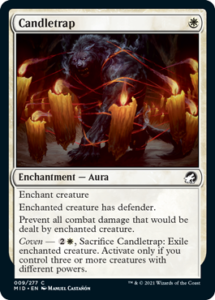

Candletrap is poor as removal, but sometimes you need something, and it does the job better than nothing. Wow, white is bad.
BLUE
1)Organ Hoarder



2)Falcon Abomination
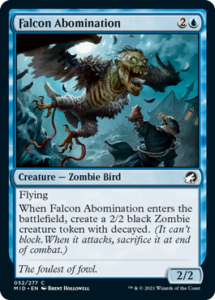

3)Revenge of the Drowned
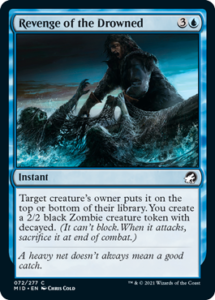

4)Startle
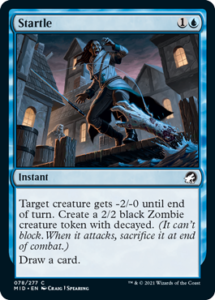

5)Locked in the Cemetery


Worth noting that I’ve been pushed out of blue so much that I have little recent experience with it and have yet to cast the card Flip the Switch or Stormrider Spirit. The difference between the second and seventh best blue card is much smaller than it is in most other colors except for…
BLACK
1)Olivia’s Midnight Ambush


2)Defenestrate
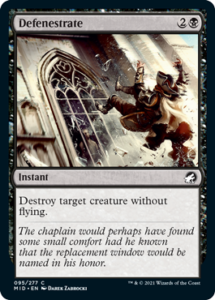

3)Eaten Alive
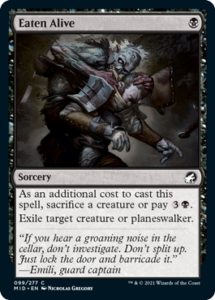

4)Diregraf Horde



5)Ecstatic Awakener // Awoken Demon
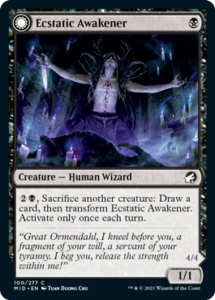

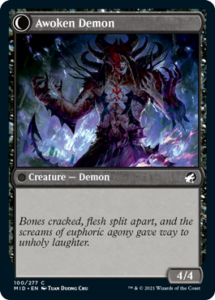

This list is tight. Black is incredibly deep, and I wouldn’t argue about a lot of the cards below this passing any of the bottom of this list. Cards like Siege Zombie, Shady Traveler, and even No Way Out have all been impressive.
RED
1)Moonrager’s Slash


2)Immolation
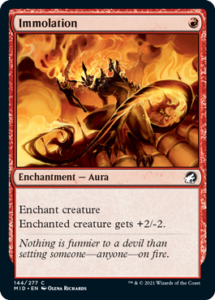

3)Burn the Accursed
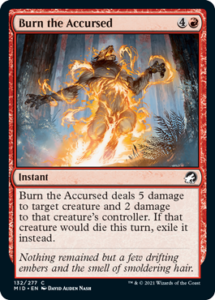

4)Harvesttide Infiltrator // Harvesttide Assailant
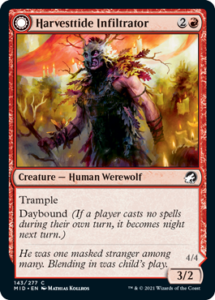

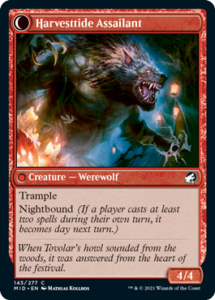

5)Ardent Elementalist


As of number five, you can say the next four are tied with it, and it’s going to be dependent on archetype. My red decks tend to be spell based more often, but cards like Voldaren Stinger, Falkenrath Predator, Lambholt Harrier, and Famished Foragers can all fit in around here. Red is weaker than other colors, but it’s got some playable cards to fill out a deck.
GREEN
1)Eccentric Farmer
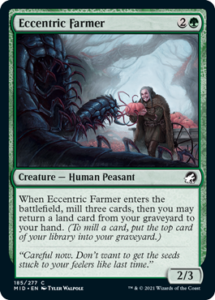

2)Shadowbeast Sightning
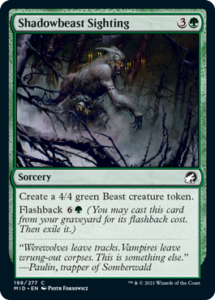

3)Bird Admirer
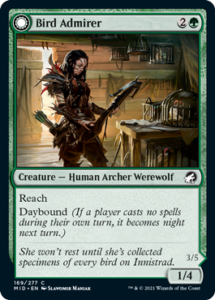

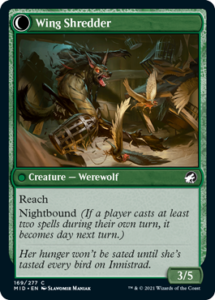

4)Harvesttide Sentry
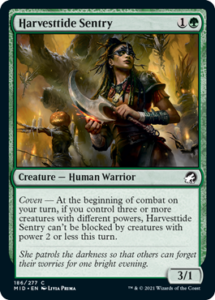

5)Duel for Dominance
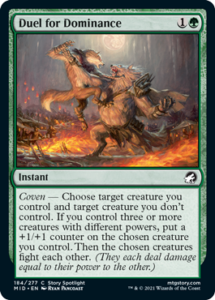

While Duel is weaker than most removal, I’m highlighting the importance of having some. It also plays well in many circumstances, passing with a werewolf like Bird Admirer and killing a creature the turn it’s played.
Overall Top 10
- Olivia’s Midnight Ambush
- Organ Grinder
- Defenestrate
- Moonrager’s Slash
- Eaten Alive
- Diregraf Horde
- Eccentric Farmer
- Ecstatic Awakener
- Shadowbeast Sightning
- Falcon Abomination
While the common pick orders are somewhat useful, I think the decks in this format are made with the rares and uncommons steering the ship. I mostly use internal pick orders as a way to identify open colors early, and those pick orders are in constant flux. Right now when I see a late-pick Bird Admirer it means nothing to me. In a week or two, I expect it to signal to me that green is relatively open. It’s important to not only understand what cards you prefer, but what the overall meta is on how people are approaching picks so you can read the signals and identify what lane to enter.
While I’ll end here for now, I’ll likely revisit Innistrad Limited next week, as well. I’ve been enjoying it and think it’s a fairly deep format with a bunch of different ways to draft. I will note that my thoughts here are exactly that. My thoughts and experiences that I’ve developed with years of experience, and others are doing the same. There are lots of ways to win in Limited, and while some ways may be better than others, your win rate will improve when you learn to draft the cards together and explore ideas and make them your own. One of the major reasons I fell in love with Limited was for this reason. I find Limited to be art more than a science, and I’ve developed my own method for winning while having fun. Much like a brewer gets excited when they find a sweet deck, I have the same experience finding what works for me in every new set that has the depth to explore.
There’s been a lot of talk around Limited lately, which is exciting. I hope we get back to a place where Limited Magic means something, and I hope you enjoy Innistrad: Midnight Hunt Limited.
Image Copyright: (c) 1995-2020 Wizards of the Coast LLC, All Rights Reserved





